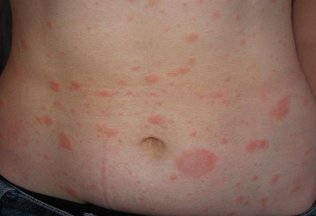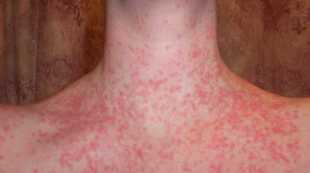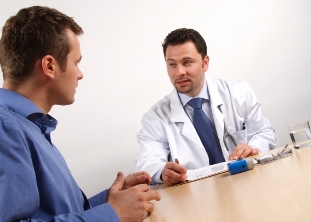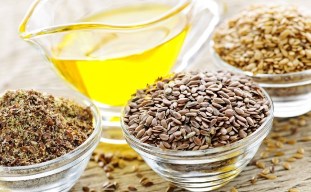
Scientists say that in recent years psoriasis on the body is more common than before. The disease is a chronic inflammatory process, which is associated with significant skin lesions red rash in the form of plaques and papules. Unfortunately, to completely get rid of the disease, no one can. From the time, the disease carries a lifetime, periodically flaring up with new force. How to treat psoriasis on the body and what tools to use to consider in detail.
Feature of pathology is its unique nature and the fact that every patient has psoriasis manifests itself in different ways. Often cause rashes on the left, and all what is left to do, that doctors can focus on a maximum to reduce the symptoms of the disease.
What is psoriasis and why does it happen
Disease refers to non-communicable diseases, related skin skin disease. Because of the different circumstances a person may interfere with the normal process of skin cell division. A person in normal condition, the update layer of the dermis takes place over 25-30 days. Psoriasis, this period can be shortened to 5 days. This process provokes the loss of connections with the cells of the skin, its roughness, separation and rejection. The skin began to appear plaques and papules, usually they are bright red or pink color.
What comes to psoriasis of the body? Scientists can not give a definite answer to the reason for the development of psoriasis. None of the existing theories have not been approved, and is not officially proven. There are only assumptions, based on which you can highlight certain causes of the disease. So, what looks like psoriasis of the body, know more:
- a metabolism of the dermis and of the whole organism;
- unstable hormones. May be due to disruption of the endocrine system;
- hypothermia and often contagious disease;
- the weakening of the immune system;
- often mechanical damage, as well as the impact of chemical substances;
- often a rash can occur on the background of psychosomatic disorders;
- alcohol and certain medications, and more.

Stages and symptoms of psoriasis
Symptoms of the disease always depend on the stage of the disease. Next, let us examine the main stages of the disease and characteristic symptoms for each.
The progressive stage
The so-called form of the disease, where its first manifestation, or the next exacerbation. This stage is characterized by the emergence of a large number of psoriatic patches, which increase in size and associated with severe inflammation. Also present intolerable sense of itching, the skin should peel off. The patient experiences severe symptoms.
Phase of inpatient treatment
Here the plaques are formed weaker, but about the cleaning issue. The rash lasts for a patient all at the same time the discomfort, itching, the skin is irritable and painful. Papules continue to grow and merge into one big damage. Plaques densely covered with whitish scales.
Stage regression
Also, this stage is called the stage of healing. Growth of papules is stopped, the skin gradually began to clear. Leave a redness of the skin, indicating reduced inflammation. It is very important to improve the patient's condition does not stop treatment. Here all efforts are directed to prevent recurrence and complete the recovery process of the skin.
Species of the disease — picture show psoriasis on the body
Type of pathology is quite a lot. Each has its own characteristics and the severity of the disease. Next, we consider the main types of psoriasis the body.
Tabula informibus psoriasis
One of the most common of the disease. Has been found in more than 80% of all patients. Its another name vulgaris or psoriasis vulgaris. Typical manifestations is the formation of spots on the body, protruding above the skin surface a few millimeters. They are red or pink in color and covered with white or gray scale. The skin is itchy and easily damaged.
Teardrop
Lesions are arranged randomly in the form of drops. This type can occur in any area of the skin, both for adults and for young people. The size of lesions can be quite varied, the size of a pea, to very large lesions with a diameter of the egg. Early stages of plaques may be small, but the development of the disease their number increases. Gradually, the rash may cover the entire body.
Inverse (psoriasis flexor surfaces)
Externally psoriasis lesions are more smooth than other types. Peeling this form is absent or minimally expressed. Location of plaques mostly in the folds of the skin. Other parts of the body do not suffer. Most often the rash appears in the armpits, in the groin, in women, under the breasts, on the inner side of the thighs. Aggravate the disease in the summer, because there is active sweat glands. Sweat provokes a favorable environment for pathogenic organisms.
Pustular
Is the most serious form of the disease. In this form the patient's body to pop the bubbles with a transparent liquid, protruding above the skin surface a few millimeters. Such blisters called pustules, hence the name. The skin in places of rash is red, inflamed and painful. Usually vesicles are localized in the upper and lower extremities in more severe cases, the rash can spread throughout the body, forming one large lesion.
Nail psoriasis
In medical practice this type of call onihodistrofiya. This affects the nail plate, the distortion and the detachment from the body with your fingers. The disease is rapidly spreading to healthy nails and skin. Improper treatment or lack of it, scars can stay for life.
Erythrodermic psoriasis
The main symptom is detachment of the skin lesions, a strong roughness of the skin, inflammation of the dermis and its layers. Here also present symptoms such as itching, swelling, peeling, redness and the development of inflammation.
Often in this form, you may experience blood poisoning, which leads to the serious condition of the patient and even death.
Psoriatic arthritis
In addition to the damage to the body pathology is associated with inflammation of the joints. The patient has severe pain in joints and muscles. Most often the fingers and lower extremities. Phalanx can grow in size and seemed to swell. Delayed treatment of the disease often leads to disability.
The basic principles for the treatment of psoriasis of the body
So, how to deal with psoriasis on the body? In most cases, the disease begins the application of funds intended for local use. Special medicines in the form of ointments, creams, lotions and sprays to the skin in areas of damage. In milder forms of the disease use of individual drugs in the more severe forms, it is recommended to use the drug combined action.
The brown coarse skin doctors recommended to remove the special emollient cream. Cream for psoriasis of the body applied to thick layers, it will help soften the dead skin dermis layer, m the purpose of removal.
Determine the cure for psoriasis of the body and medicine in pathology doctor needs exclusively. Often professionals practice hormonal, non-hormonal creams and medications, the composition of which vitamin D3.

Together with the treatment using synthetic drugs, often use methods such as ultrasound treatment. Medical this type of treatment is also called light therapy. This procedure is quite safe and effective way.
Psoriasis of the scalp it is also used in medicated shampoos, gels and masks. To cope with the disease the hairline is quite difficult, because the hair is preventing the penetration of therapeutic components.
Drug
Medicine for psoriasis of the body should be appointed exclusively by the expert. Not to self-medicate. The patient can easily be confused with psoriasis, any other skin disease to treat and is not what you need.
Medication for psoriasis of the body is divided into the following groups:
- Corticosteroids. These funds are effective, but the big drawback is a lot of side effects. They should be used strictly on prescription.
- Medications with vitamin D3 in the composition. Vitamins are essential in the treatment of this disease. Saturate the body with magnesium, zinc, potassium helps to restore the immune system and promote healing of the skin.
- Tar preparations. This product is included in Soaps, shampoos, creams and gels. Get rid of the disease used juniper, pine and birch tar.
Complications the use of local funds is not enough. In such cases, doctors inject treatment light therapy, laser therapy and other physical therapy.
The role of traditional medicine
Next we will look at how to treat psoriasis of the body traditional methods. For this purpose, often used in creams that are homemade and a variety of tools based on herbs. Consider a few effective recipes, how to deal with psoriasis on the body at home.
Flax seeds for skin cleansing
To prepare the medication must be placed in a thermos 1 l 2 tbsp. l. flax seeds and the gulf of boiling water, tightly close the lid. Infuse the mixture for at least 10 hours. The use of tincture of need in the morning and evening on an empty stomach.

Soda treatment
Skin is recommended to wipe 5-6 times a day with a solution of ordinary baking soda. You can do this in a glass of lukewarm water should dissolve 2 teaspoons of baking soda. The solution to moisten a cotton pad and gently deal with plaque.
Onion poultice
You can prepare the medicine you have to take the onion and finely chop it. The resulting mixture wrapped in cheesecloth and apply 20-30 minutes damage. Treatment should be continued until cleaning.
Psoriasis treatment of the body is a complex and long process. Success can only be achieved by addressing the health carefully and apply the necessary effort.
























